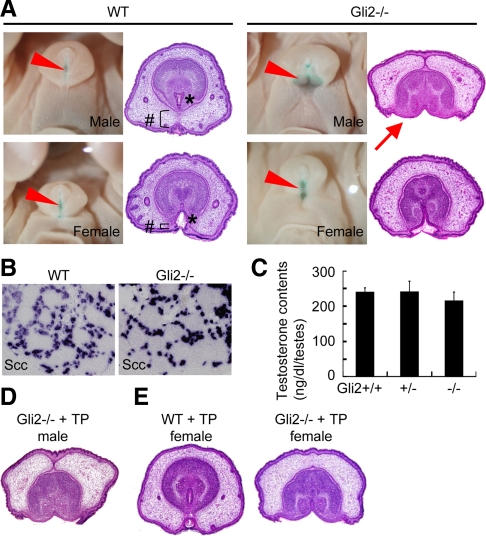Fig. 2.
Requirement of Shh-Gli2 signal for masculine processes. A, Wild-type (WT) male GT at E18.5 shows a well-developed prepuce (#) and a tubular urethra (*). In the Gli2 KO mutant embryonic GT, the urethra uncovered by epidermal epithelium is shown by methyl green staining (shown by arrowheads). The male mutant GT exhibits more severe phenotypes than those of the female mutants. The histological section shows that the urethral epithelium is exposed to the outer surface of the Gli2 KO male embryos (arrow). B and C, Gli2 male mutant GT does not show defects in androgen signaling pathway. The expression of p450Scc is not changed in the Gli2 mutant testis at E16.5 (B). No significant differences of the testosterone content are observed irrespective of Gli2 genotypes. D and E, Intrauterine androgen treatment experiments for the Gli2 mutants. TP treatment does not recover the GT phenotype of the Gli2 male mutants (D). The wild-type female embryonic GT treated with TP is masculinized displaying a similar morphology to the male GT (E, compare with wild-type male and female GT in A), but mutant female GT does not show masculine phenotypes (E).

